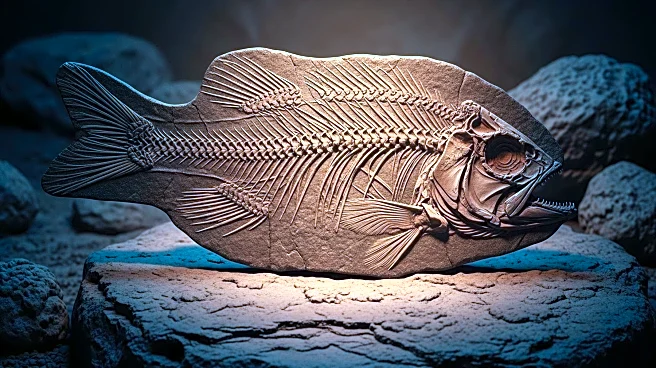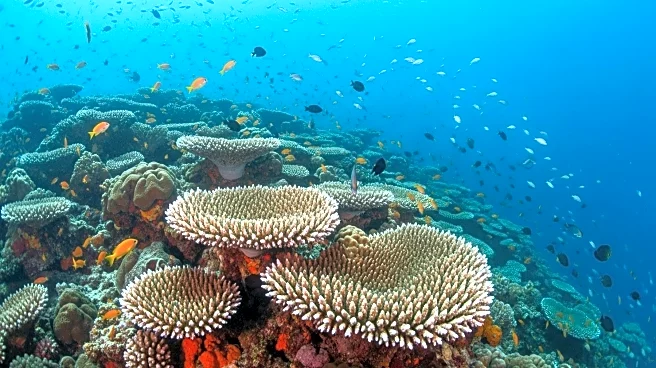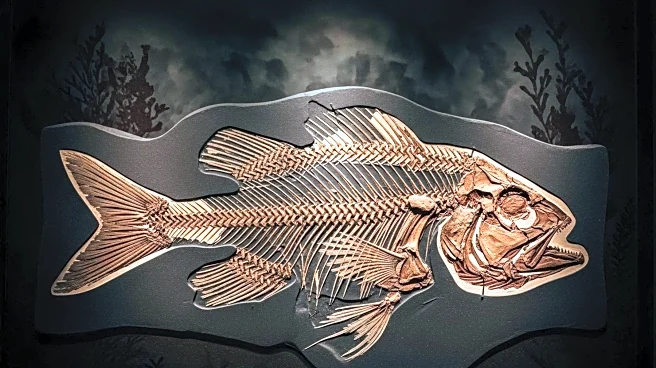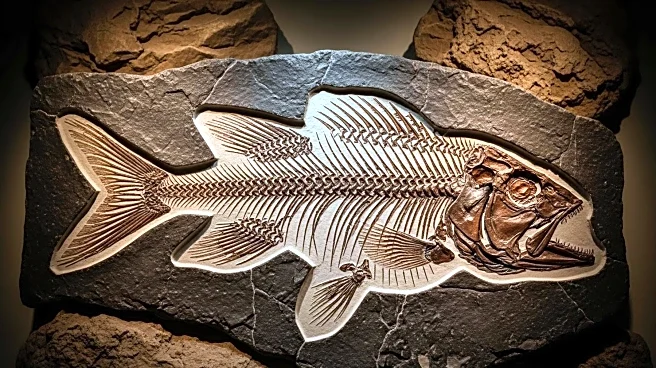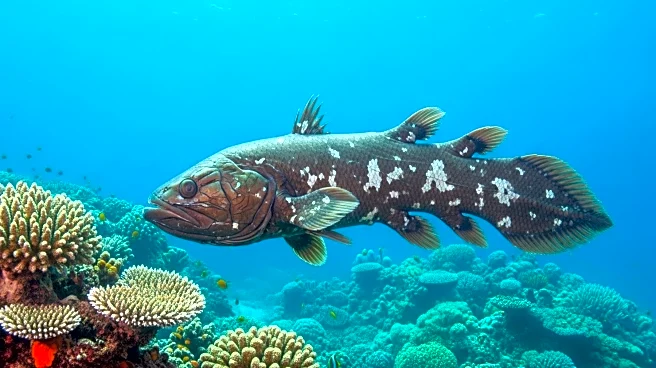What is the story about?
What's Happening?
Divers in Indonesia have captured the first underwater images of the Sulawesi coelacanth, a prehistoric fish thought to be extinct for 70 million years. The footage, recorded by Alexis Chappuis and Julien Leblond, shows the coelacanth at a depth of 144 meters off the coast of North Maluku. This discovery marks a significant milestone in marine exploration, as coelacanths are considered 'living fossils' with evolutionary roots dating back over 400 million years.
Why It's Important?
The discovery of the Sulawesi coelacanth provides valuable insights into marine biodiversity and evolutionary history. It challenges previous assumptions about the species' extinction and highlights the importance of deep-sea exploration in uncovering hidden ecosystems. The presence of coelacanths in the mesophotic zone underscores the need for conservation efforts to protect fragile marine habitats from threats such as pollution and deep-sea mining.
What's Next?
Researchers plan to return to the site in 2026 with non-invasive sampling tools to study the genetic diversity of the coelacanth population. These efforts could inform conservation strategies and the establishment of marine protected areas. The discovery also raises awareness about the potential impact of eco-tourism on vulnerable species, prompting discussions on sustainable practices to preserve marine biodiversity.
AI Generated Content
Do you find this article useful?
